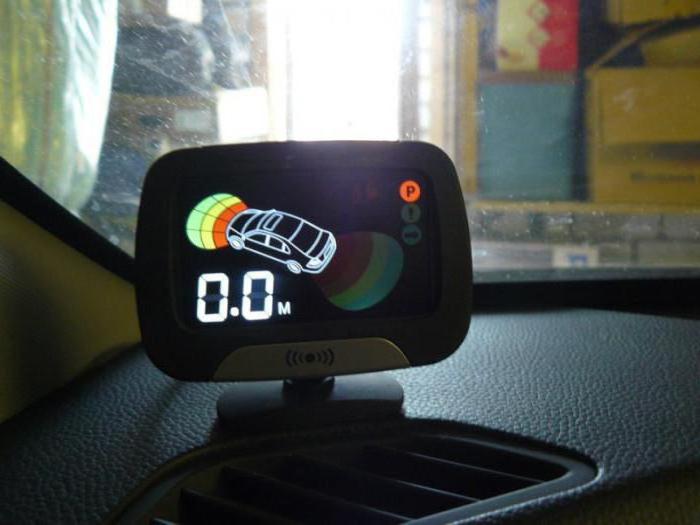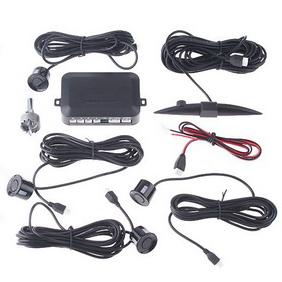How to install a parking aid: instructions, advice of specialists
Parking radar allows you to safely managethe car in close conditions. With the help of sensors, the driver controls the distance of the car body to the nearest objects, reducing the risk of collision. In this case, the performance of the parking sensor depends on the configuration of its installation. There are different ways to integrate and position sensors, as well as channels for their interaction with the control unit. Manufacturers recommend installing a parking sensor with the maximum coverage of the space in front of the car, but this is not always advisable. In choosing a wiring diagram, it is important to take into account a number of nuances that will be discussed later.
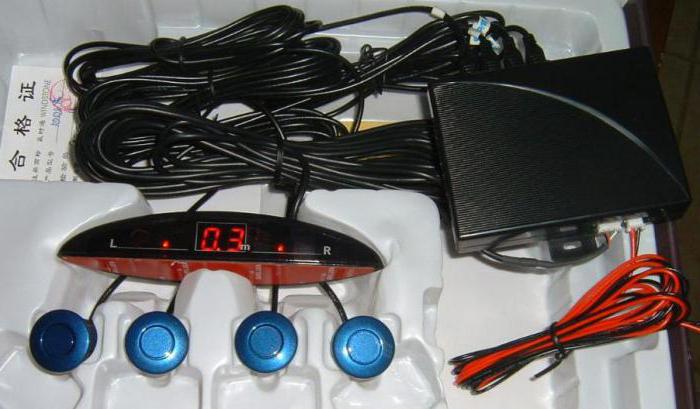
Number of sensors and configuration of their location
It is usually practiced to install sets of 4, 6and 8 sensor emitters. During operation, each sensor by processing an ultrasonic pulse allows you to estimate the distance to a third-party object. Sensitive elements are placed behind and in front of the car, and the specific number on each side depends on what equipment is provided for the parking sensor - 6 sensors are usually divided into 2 and 4. In the front part is set to 2, and 4 - from the rear. Unevenness is due to the fact that the most dangerous "blind" zones fall precisely behind.
The maximum set of 8 sensors suggestssingle placement scheme - 4 sensors per side. Experts do not recommend using 6 sensors on one side because they will provide too high sensitivity and a corresponding increase in the percentage of false positives. It is also recommended to install the parking sensor in accordance with the distance from the ground and the distance between the individual emitters. The height of the installation point from the roadway according to the instruction is 55-60 cm. The gaps between the sensors should be kept within the range of 10-15 cm.

Installation by tapping method
This is a classic method of installation, whichprovides for the creation of a hole in the body or bumper of the car. To begin with, choose the optimal sensor integration location. The mounting point must be located away from the protruding structural parts of the machine, among which are a trailing device, a spare wheel holder, towing eyes, etc. The cable that connects the sensor and the control unit is then connected. Wires should not be placed in close proximity to the exhaust system or power harnesses of local electrical equipment. Physically install the parking assist is desirable in the holes made by the complete drill. In this case, the optimal diameter will be provided without the risk of a narrowed or expanded niche. The sensor is inserted into the prepared hole using rubber seals, which are also supplied in the kit.

Installation by waybill
This method is advantageous in getting rid of the need forholes for sensor integration. It should be noted that the formation of the installation niche is due to the need to fix the sensor element, as well as laying the communication channel through the wiring. The way to install parking sensors is easier, since in this case it is enough to use a special adhesive solution included in the kit. Actually, by the same principle, the electromagnetic tape of the parking sensors is fixed - an analog of ultrasonic sensors.
With regard to wiring, overhead models are more oftenall work on a wireless basis. Therefore, the question of how to properly install parking-lot parking sensors, assumes only the implementation of correct marking, landing on the glue and further adjustment.
Installation of other functional components
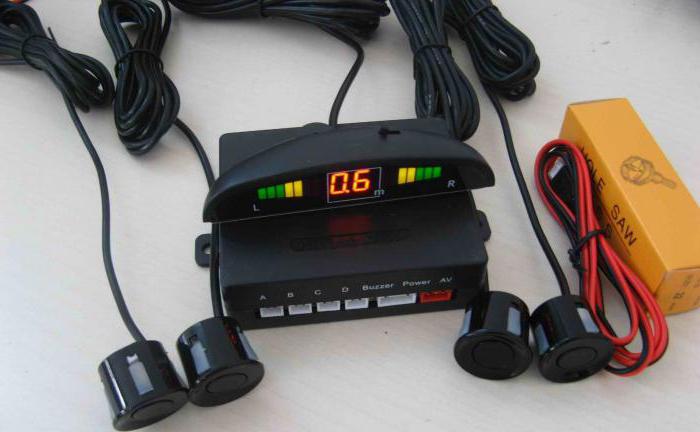
The minimum configuration of the parking radar,except sensors, also provides the presence of a control unit and a display. The first produces signal processing from the sensors, and the second provides the driver with specific data on the distance to the objects. The controller unit can be installed in the luggage compartment, but so that it is reliably protected from mechanical damage, vibrations and moisture. Installation is carried out with the help of a special metal frame into which the block itself is inserted. How do I put the parking sensor on my own? To do this, it is enough to arm yourself with a screwdriver, complete screws or bolts. In the prepared technical holes it is necessary to screw the frame, and then to install the controller also with screws of a different format. The display is mounted on a prominent place - usually on the front panel. It can be fixed and with the help of brackets or be hooked, which, however, is unreliable.
Connection diagram
Before connecting, disconnect the controlblock from the power supply, and then determine visually the wiring channels. For example, a parking sensor, 6 sensors of which are connected according to the classical wire method, will provide two-way connection to the controller unit. That is, 4 lines will need to be connected to one side of the relay, and 2 - to the other, directed to the driver. From the front front side, the relay of the control unit usually has connectors for connecting the information wire, supply circuit, etc.
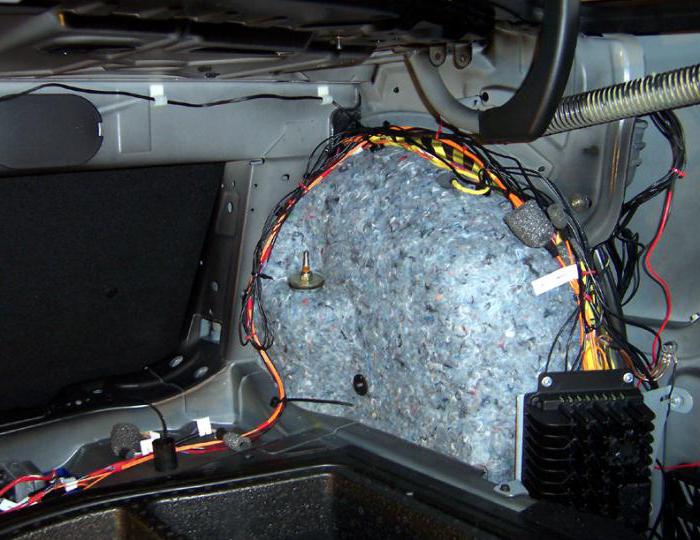
Wireless systems only suggestconnection of the controller unit and in some cases the display for power supply. Power must be provided only from the battery and the on-board power supply. Pulse sources for such a connection scheme are not suitable. Also, compatibility with the stress index should be assessed. For example, the Parktronic Sho-Me in standard modifications can only be connected to sources with a voltage of 10-15 V.
General recommendations of installation specialists
To ensure a stable signal receptionIt is recommended to observe the correctness of the position of the sensors from the beginning. Usually, self-assembly is realized without taking into account the side of the orientation of the sensitive sensor. Experts advise to direct the wide part of the rim upwards. By the way, the premium parktronik Sho-Me in the modification Y-2616 includes 8 large sensors with pronounced metal rings. When installing them, it is especially important to comply with this rule. Another advice is to insulate the wiring. All supply cables must not only be protected, but also located in channels that exclude contact with the metal structure or other elements of electrical equipment.
Conclusion
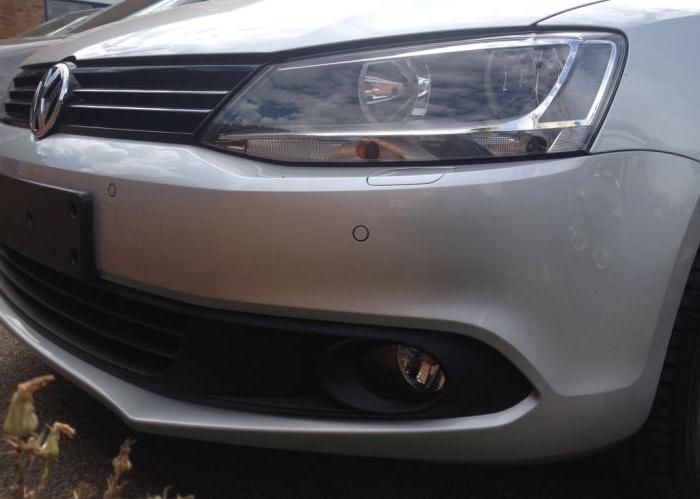
The technology of parking radar installation is muchIt is more difficult than installing a rear-view camera. This is due to the tough competition between these driver assistants, while in practice the sensors are more efficient. And yet a well-thought-out arrangement of sensors and communication lines helps to install a parking sensor without any problems. The price of similar services in specialized workshops can vary from 5 to 10 thousand rubles. depending on the complexity of the work. For the ordinary car owner, the main problem of this operation will be the laying of the cable infrastructure. Working with an on-board power grid in itself imposes a high responsibility. However, you can choose an alternative method of wireless installation.
</ p>